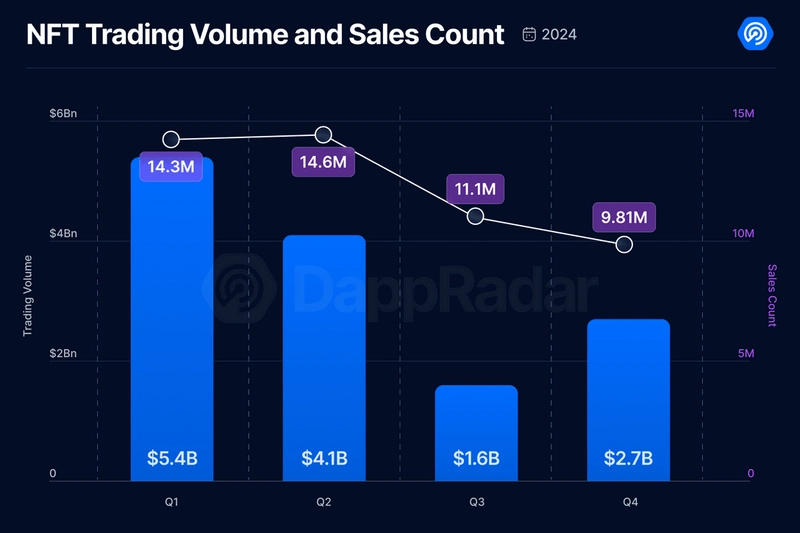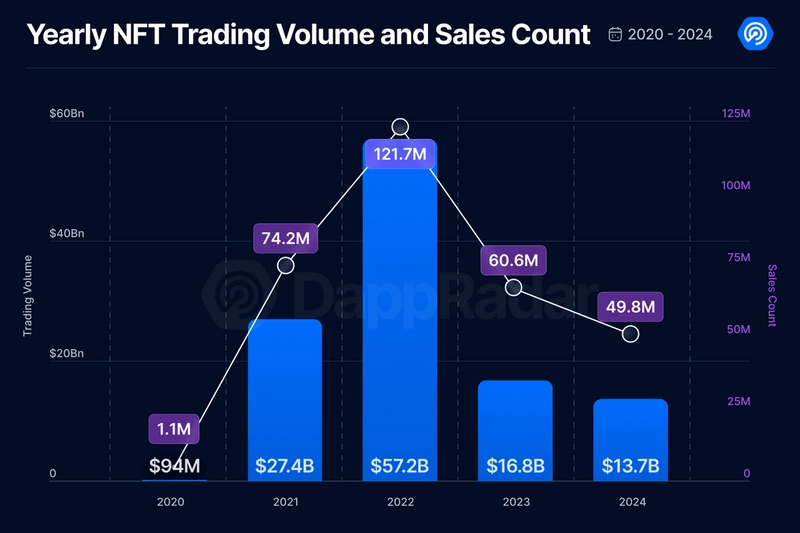Introduction: The Promise and the Problem
Web3 promises a decentralized future, blockchains, NFTs, DeFi, DAOs - they’re reshaping how we own, trade, and interact online.
Yet most projects do “absolutely everything but tell the user at a base level what to do.”
Need examples?
Take MetaMask’s cryptic setup. Or OpenSea’s infamous wallet wall during the NFT boom. Newcomers get lost in the maze. The fallout? High drop-off, niche users, and Twitter posts calling Web3 “too hard” or “a scam.”
The tech’s revolutionary, but if no one can use it, what’s the point?
This is a call to action. Web3’s adoption hinges on fixing onboarding. It should be on a T-shirt by now…“Onboarding matters” - and sold out already. But there’s still no real headway.
In this piece, I talk about why MetaMask(wallet) confusion, NFT churn, and DeFi drop-offs aren’t bugs, but signals we need to fix onboarding at the root. With 3 fixes grounded in 2025 reality. Here’s why it’s broken, who’s stumbling, and how to get it right.
Table of Contents
- Introduction: The Promise and the Problem
- The State of Web3 Onboarding: A Few Ugly Truths
- The Founder Factor: Caught in the Builders’ Trap
- The Stakes: Adoption or Bust
- Ideas to Fix It: A Blueprint for Better Onboarding
- The Payoff: Web3 for Everyone
- Counterpoints: The Pushbacks You’ll Hear (and How They Fall Apart)
- Conclusion: Founders, Break the Bubble
The State of Web3 Onboarding: A Few Ugly Truths
Web3 projects consistently botch the basics. Real examples tell the tale:
- MetaMask: Install it, get a seed phrase, then…silence. No nudge to buy ETH, no gas primer. X users ask, “Set it up, now what?”
- OpenSea: No wallet? No help. Got one? Here’s a flood of listings, no guide. DappRadar’s 2023 stats show most first-timers never buy.
- Uniswap: “Liquidity pools” and “slippage” with zero context. Twitter threads: “Tried swapping, gave up.”
Why? Many devs assume blockchain fluency. Rushed launches favor hype over UX. The “community will sort it out” mindset skips design. But the root runs deeper, I would know as I have been in these “war rooms” a few times myself.
The Founder Factor: Caught in the Builders’ Trap
Founders drive Web3’s vision, but they’re tangled in a double bind.
UX pros, product leads, and designers push for onboarding: “Users need this, or they’ll bounce!” Yet founders often lean on speed, ship the MVP, hype the token, patch later.
“Early adopters get it,” they say. It’s a startup reflex: move fast, fix on the fly. Understandable, but it’s not the full picture.
Too many founders build ecosystems, not for end users, but for other builders, caught in a recursive loop where focus where the focus never leaves the mirror.
FUEL kicked off as an Ethereum rollup, now a modular layer with FuelVM and Sway, parallel processing and dev-friendly tools galore. It’s a builder’s dream, but onboarding’s a slog for normies; Twitter posts in 2024 ask, “Cool tech, but how do I use it?”
Polkadot offers a “blockchain of blockchains” for devs to plug in parachains, yet its wallet and docs stump regular folks.
The Sandbox hands creators a metaverse toolkit, but casual players drown in NFT jargon.
Optimism scales Ethereum for dApps, but “rollups” mean nothing without a lifeline.
Builders build for builders who build for more builders, who then build for even more builders while they all promise the next builder will bring in the users, users get left behind.
It’s not malice though, it’s perspective. Founders swim in Web3’s bubble…crypto X, Discord, meetups, where everyone’s a coder or speculator. They assume that’s the crowd, so dev tools and “ecosystem potential” outrank entry points. A certain Layer 2’s $81.5M raise hyped scalability, not usability.
UX gets sidelined. Onboarding is seen as grunt work, not a VC dazzler. Failed 2022 NFT drops show the cost: dead not from bad tech, but from stranding users.
The crypto-nerd pool’s drying up, mass adoption won’t wait for insiders to pivot.
The Stakes: Adoption or Bust
This isn’t nitpicking, it’s make-or-break. DappRadar pegs Web3’s daily active wallets at an average of ~26.4 million in 2024 year-end. (We all know what those wallets really are). Web3’s complexity isn’t the hurdle; its refusal to bridge the gap is. Somehow, we keep refusing to meet users halfway. And the longer it ignores onboarding, the more glaring the fallout becomes.
Nowhere is this clearer than in the NFT space.
Despite early hype, NFT trading volume in 2024 saw its weakest performance since 2020. According to DappRadar’s quarterly breakdown, volumes surged in Q1 to over $5.3 billion, only to plummet to $1.5 billion in Q3, before rebounding slightly in Q4.
The sales count tells a deeper story. Even when volume rose in Q4, sales continued to decline, indicating fewer users transacting and NFTs becoming pricier—likely due to ETH’s price hike. The result? Newcomers saw a confusing, expensive market with little help navigating it.
Zooming out to the yearly view, 2024 recorded a 19% drop in trading volume and an 18% decline in NFT sales compared to 2023. It marked one of the worst years since the NFT boom began.
The message is clear: with the current systems of onboarding, even the most hyped verticals bleed users.
Ideas to Fix It: A Blueprint for Better Onboarding
Documentation’s a start, but users won’t read it. Web3 needs active, intuitive solutions:
-
Guided Onboarding Flows
UI steps, “connect wallet here,” “fund it this way.” MetaMask could prompt ETH buys; OpenSea could demo an NFT purchase. The things the “gigabrains” think are not needed are actually very much needed.
-
Smart Defaults
Pre-set gas or slippage for beginners. Uniswap’s “safe swap” mode; OpenSea’s affordable NFT nudge. Ease in, don’t overwhelm.
-
In-App Education
Tooltips (“gas pays for this”), quick videos, gamified tasks like “swap your first token, earn a badge.” Active learning trumps passive docs.
-
Seamless Wallets
One-click setups could actually help. Imagine OpenSea bundling MetaMask with $5 in ETH. One click, zero friction. Cut friction, keep users.
-
Feedback Loops
“I don’t get this” buttons for real-time fixes. DAOs fund what users flag. Decentralized doesn’t mean clueless.
-
Concierge Layer
AI is all the rave now and rightly so. Why not temporary chatbots “how do I buy this?” Phase it out as tech and user matures.
The usual advice above - better docs, smart defaults, cleaner UIs, is of course table stakes by now. Those aren’t strategies. They’re hygiene.
I have always maintained that if Web3 wants to escape its own echo chamber and onboard millions, it needs to stop iterating on dev-first workflows and start designing for human-first experience.
Here are three deep, Web3-native fixes, not based on hope, but built from what’s live and loud in April 2025. They reflect the actual friction, tools, and behavior happening right now across DeFi, DAOs, gaming, NFTs, and infrastructure.
Fix 1: Reverse Onboarding, “Experience First, Wallet Later”
My Premise? Right now, onboarding starts with what users hate: wallet setup, seed phrases, network switches, gas fees. The friction hits before they’ve felt any value.
So let’s flip it.
Instead of forcing new users to configure crypto tools upfront, they first play in a safe, sandboxed version of your product — with no wallets, no real tokens, no cost or commitment. Think of it like a simulation that’s fun and frictionless, where the value is felt immediately.
How It Works(Ideally):
Projects launch experience-first sandboxes on testnets. A user enters without connecting anything. They’re assigned a temporary “shadow wallet” and fake tokens (e.g. test ETH, FuelCoins, etc). They can:
- Swap tokens on a mock Uniswap
- Mint and trade NFTs with no gas fees
- Cast votes in DAO simulations
Only once they’ve completed a few actions does the product say:
“Looks like you’re ready. Want to keep your progress and go live?”
One tap bridges the sandbox wallet to mainnet, seeds it with a starter amount via LayerZero or Alchemy Pay, and boom, they’re active Web3 users!
Why This Matters:
You’re not asking users to read before they ride. You’re letting them feel the power of Web3 before asking for trust. It’s UX-as-a-hook.
Real-World Signals:
- Axie Infinity proved “play-first” onboarding can bring in millions—then lost them to wallet friction.
- Sandbox Metaverse has a $1B valuation but onboarding still kills retention.
- Testnets are developer tools today. We make them user gateways.
The Impact? Even a 10% stick rate from sandbox-to-mainnet could mean millions of new users.
From “Sign up to learn DeFi” → “Play DeFi and learn by doing.”
Fix 2: Web3-Wide User DAOs — “Onboarding as an Incentivized Coalition”
My Premise? No single dApp owns onboarding, but every dApp suffers when it’s ignored. So instead of scattered, siloed efforts, imagine a cross-project, token-incentivized User DAO model, funded and governed by the protocols that benefit from adoption.
How It Works(Ideally):
Web3-native onboarding DAOs, let’s call them uDAOs, form to coordinate onboarding across ecosystems. Aave, Polkadot and others pool a small slice of treasury (~1%) to fund them. In return:
- New users get a pre-linked wallet
- They complete a chain of onboarding tasks (e.g., swap, mint, stake)
- They earn a utility token, say, $USER, that unlocks vesting rewards over time
Participation is on-chain, gamified, and visible. uDAOs collect user friction points, push product feedback upstream, and manage mentorships or tutorials like an L2 support layer, but decentralized.
Why This Matters:
This isn’t a loyalty program. It’s a coalition for collective onboarding, backed by incentives and shared governance. It creates an entry layer built by users, for users, but funded by protocols that depend on adoption.
Real-World Signals:
- MakerDAO partnered with Huntingdon Valley Bank (HVB). DAOs aren’t toys anymore.
- Aave’s $27.45B TVL shows liquidity flows to where users are incentivized.
- Polkadot and Axelar’s multichain infra can handle cross-ecosystem rewards.
The Impact? Even 100 projects contributing can fund 1M+ new wallets a year.
It’s the Web3 version of shared infrastructure, but for people instead of data.
Fix 3: Persistent AI Concierges, “Web3’s UX Co-Pilot”
My Premise? Wallet UX hasn’t fundamentally changed in years. Every app assumes the user understands gas, L2 bridging, asset security, slippage, transaction history… the list goes on.
But what if an AI agent embedded in every major dApp could act as your co-pilot—learning how you use Web3, explaining actions in plain language, and even executing low-risk commands for you?
How It Works:
Call it a Web3 Concierge Agent, an AI layer that lives inside MetaMask, OpenSea, Axelar, Uniswap or any other protocol/project. It’s personalized. It has memory. It reads your wallet and the current app context.
Examples:
- “Gas is 0.013 ETH right now. Want me to submit the transaction when it drops to 0.009?”
- “You’re swapping ETH for USDC. Want me to confirm the slippage is safe?”
- “Need help? You tried this 3 times, want a walkthrough?”
It doesn’t just explain, it takes action with permission. All interactions are logged transparently. These agents could be open-source and deployed via Optimism’s sequencer model or similar trustless infra.
Why This Matters? Even experienced users lose money to gas mistakes and bridging errors. For beginners, this AI layer is the difference between "I gave up" and "I got through."
Real-World Signals:
- Chainlink’s oracles have exploded in AI-integrated data services.
- SingularityNET and Fetch.ai already explore autonomous agents.
- Wallets like Rabby and OKX are toying with UX nudges—but lack true AI memory/context.
The Impact? An AI concierge could reduce onboarding friction by 70%+.
You don’t need to read another tutorial, you just need someone (or something) that knows what you’re doing and helps you do it better.
The Payoff: Web3 for Everyone
These aren’t tweaks, they’re trajectories. They don’t require centralization. They require creativity, coordination, and courage.
This flips Twitter posts from “impossible” to “Web3 finally gets it.” Newbies stay, pros thrive, Web3 grows. It’s not dumbing down, it’s opening the door.
Counterpoints: The Pushbacks You’ll Hear (and How They Fall Apart)
No good critique lands clean without acknowledging the friction. Web3 folks will have rebuttals, and some of them are valid. Let’s walk through the most common ones.
1. “Onboarding’s a Feature, Not a Bug, Web3’s Meant to Be Hard”
Some will argue that complexity filters for commitment. “Early Bitcoin adopters didn’t need step-by-step guides, they figured it out”. Builders say ease-of-use risks watering down the ethos. Sway, FuelVM, or parachains? They're not for casuals, they're for the technically curious.
Why It Comes Up? The DIY, cypherpunk roots of crypto treat accessibility as an afterthought. You’ll see this sentiment on X:
“If you can’t figure out MetaMask, you don’t deserve DeFi.”
That gatekeeping mindset made sense in 2013, not in 2025. Bitcoin didn’t scale because it got harder, it scaled because wallets got easier.
Complexity for builders is fine. But users? They need a ramp, not a wall.
2. “We’re Still Early”
Everything's still experimental. Expecting polish during infrastructure phase is premature. Ethereum was rough at launch too, look where it is now.
It’s our default cop-out. “It’s early” is used to deflect critiques and buy time.
Early was 2017. It’s been a decade. The space has matured, funding has flowed, is flowing and will still flow(maybe not as much), and users expect more. Web2 doesn’t wait, and users won’t either. Mass adoption won’t happen while we act like it’s still day one.
3. “Builders First, Users Come Later”
Our current 2024 and 2025 mantra. Prioritize devs. Nail the tools, stack the ecosystem, and users will follow. MetaMask didn’t show up on day one, Ethereum still flourished.
Why? VCs fund protocols, not UI. Founders are told to scale infra first, UX later. “L2s are infra, not apps” is a common refrain.
That playbook worked once. The space is too crowded now for “build it and they will come.” Look at Arbitrum’s growth, strong onboarding brought TVL and developers. Good UX isn’t the opposite of good tech, it accelerates it.
4. “Decentralization Means No One Owns Onboarding”
There’s also the argument that in Web3, no one’s supposed to own the funnel. Let wallets, DAOs, or the community do the lifting. If a dApp takes over onboarding, it risks becoming Web2 again.
The truth as to why that comes up is not far fetched. Decentralization is the hill many will die on, anything that smells like “top-down” draws fire.
Guidance isn’t centralization. UX doesn’t mean giving up control, it means giving people clarity. The idea that “the community will figure it out” is great until no one actually does. Even in a trustless system, users still trust someone to show them the front door.
5. “Focusing on Newbies Slows Innovation”
Heard this at an offsite last year, and it floored me. Time spent making Web3 easier is time lost from cutting-edge tech, ZK-rollups, modular execution, parallelism and every other lingo we can think about. Onboarding is busywork for interns.
There’s a cultural divide: builders vs. UX folks. Twitter is full of devs lamenting time “wasted” on education when they could be shipping.
What good is innovation no one uses? Onboarding isn’t dilution, it’s acceleration. If you want 100x adoption, you need more users.
More users = more builders = more feedback = better protocols.
Ethereum didn’t explode because of cryptography, it exploded because people could use it.
The tech is mature. The excuses aren’t.
You don’t lose decentralization by helping people onboard.
You lose users by leaving them in the dark and calling it “freedom.”
Purists might cry “centralization!” Concierges and defaults lean that way, sure. But it’s a stepping stone, early help fades as users learn. The alternative? Stay niche while Web2 tears us a new one with each passing day.
Conclusion: Founders, Break the Bubble
Web3’s potential is massive, but its onboarding is a chokehold. Projects doing “everything but the basics” aren’t quirky, they’re floundering.
Founders, you’re not villains, you’re just stuck in a trap. The builders-only lens and shifting focus to doing what everyone else in the herd is doing - chasing every flashy trend. It doesn’t scale with the vision
Listen to your pros, prioritize users, and build for people, not just blueprints. With guided flows, smart design, and pragmatism, Web3 can onboard the masses without losing its soul.
The tools are here. The stakes are clear.
Stop chasing the echo chamber—start welcoming the world.
Web3 has the tools.
It has the capital.
It has the builders.
It just needs to stop leaving its users at the door.









Top comments (4)
This is pretty good Opeyemi,
Loved the story telling, it's nice to read something which is not "chatgpt" like
And at MetaMask we are working on a few things on your point on "Reverse Onboarding, “Experience First, Wallet Later”
Check it out her: metamask.io/en-GB/developer/delega...
This is really well put together for real!
Thank you Tobi. I wish alot of the firms would walk the walk and not just talk the talk.
So... web3 is useless for 95% of web.